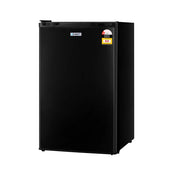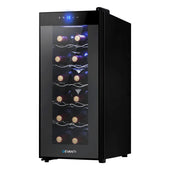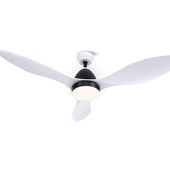Introduction: The Evolution of Dishwashers in Modern Homes
Dishwashers have transitioned from being luxury items to essential appliances in contemporary households. Early dishwashing units, introduced in the 19th century, were manually operated contraptions requiring significant effort. The invention of motorised dishwashers in the mid-20th century marked a major shift, making them more accessible and efficient. Over the decades, advancements in engineering, coupled with rising environmental awareness, have spurred significant changes.
Modern designs incorporate cutting-edge technology to deliver improved functionality. During days of increased environmental awareness, features such as sensor-based wash cycles, eco-friendly modes, and compact designs cater to modern needs. This evolution reflects a commitment to reducing energy and water consumption, aligning with global sustainability goals.
Understanding the Environmental Impact of Traditional Dishwashers
Traditional dishwashers often consume excessive water and energy, contributing significantly to environmental strain. Their older designs typically rely on high water pressure and prolonged heating cycles, resulting in elevated energy demands. These devices generally use outdated motors and pumps, which are less efficient than modern counterparts.
The extensive use of hot water amplifies carbon emissions, especially if the energy source derives from non-renewable fossil fuels. Many traditional models also lack built-in water-saving technologies, leading to substantial wastage in households. Over time, inefficient dishwashers can indirectly accelerate ecological degradation through increased utility consumption and greenhouse gas production.
Key Features of Energy-Efficient Modern Dishwashers
- Sensor Technology: Built-in sensors monitor water levels, soil load, and detergent requirements, ensuring minimal waste.
- Eco-Friendly Wash Cycles: Specialised settings use less water and energy by adjusting temperature and rinse duration.
- Low-Flow Water Jets: Precision engineering delivers high-pressure water flow while reducing overall consumption.
- Improved Insulation: Enhanced insulation retains heat more effectively, cutting down on energy usage during drying.
- Efficient Filters: Advanced filtration systems reduce water waste by recycling clean water throughout the cycle.
- Energy Star Certification: Many models meet strict efficiency standards, reducing operational costs and environmental impact.
- Advanced Drying Techniques: Heat-pump and condensation drying systems consume less energy compared to traditional drying methods.
Advanced Filtration Systems for Reduced Water Consumption
Modern dishwashers incorporate advanced filtration systems designed to optimise water use. These systems filter and recirculate water during multiple wash cycles, reducing the volume of water required. Unlike older models, high-efficiency filters remove food particles more effectively, preventing the need for frequent water replacements. This innovative approach minimises wastage while maintaining cleaning performance.
- Continuous Recirculation: Filters enable continuous recirculation of water, ensuring cleanliness with reduced consumption.
- Built-in Microfilters: Microscopic filters enhance purification by removing dirt particles, even during low-water washes.
- Self-Cleaning Mechanisms: Some systems are equipped with self-cleaning functionalities, maximising efficiency and reducing maintenance needs.
These technologies prove essential in helping dishwashers achieve eco-friendly operation without compromising results.
Eco-Friendly Wash Cycles: Balancing Cleaning Power and Conservation
Modern dishwashers employ advanced eco-friendly wash cycles to minimise resource usage while maintaining effective cleaning performance. These cycles often utilise lower water temperatures and reduced water volumes, which helps in conserving energy and resources. Sensors embedded within dishwashers detect the level of soil and adjust wash times, spray intensity, and temperature accordingly.
Features such as spray arms with optimised water distribution ensure efficient coverage while avoiding waste. Manufacturers incorporate short cycles specifically designed for lightly soiled dishes, which use even fewer resources. Additionally, enzyme-rich detergents complement these cycles, allowing thorough cleaning at lower temperatures without compromising results.
The Role of High-Performance Motors in Energy Savings
High-performance motors play a pivotal role in enhancing the energy efficiency of modern dishwashers. These motors are designed to optimise the power required for tasks such as water pumping, spinning, and spraying. By achieving greater torque with less electrical input, they reduce the overall energy consumption of the appliance.
Features such as variable-speed technology allow these motors to adjust their performance based on the cleaning cycle, ensuring minimal energy wastage. Additionally, improved motor design reduces friction and heat generation, further conserving energy. As a result, high-performance motors contribute significantly to lowering electricity usage without compromising on cleaning effectiveness.
Smart Sensors: Precision Cleaning with Minimal Waste
Modern dishwashers leverage advanced smart sensors to optimise cleaning while minimising resource usage. These sensors monitor factors such as water turbidity, load size, and detergent levels in real time, enabling the appliance to adjust water, energy, and cycle duration accordingly.
- Water Turbidity Sensors detect the level of debris in the water, ensuring additional rinses are only applied when necessary.
- Load Sensors assess the weight of the contents, tailoring the water and detergent requirements for efficient operation.
- Temperature Sensors maintain precise heat levels, preventing energy waste while ensuring thorough cleaning.
Through these innovations, dishwashers achieve high-performance cleaning while significantly reducing environmental impact and household utility costs.
The Benefits of Condensation Drying Over Traditional Heat Drying
Condensation drying uses the residual heat from the final rinse cycle and humidity inside the dishwasher to evaporate water. This energy-efficient method eliminates the reliance on heating elements, reducing electricity usage. Unlike heat drying, it minimises the risk of melting or warping plastic items commonly found in dishwashers.
Key advantages of condensation drying include:
- Energy savings due to its reliance on heat already generated during the rinse cycle.
- Environmental benefits, as it supports reduced carbon emissions.
- Safer drying for delicate items, including plastic and glassware.
- Quieter operation, since fewer mechanical systems are required.
This method aligns with modern dishwashers' focus on sustainability and optimises drying performance effectively.
Comparing Energy Star Certified Models: What Makes Them Stand Out?
Energy Star certified dishwashers excel in conserving energy and water without compromising performance. Manufacturers prioritise cutting-edge technologies, such as advanced spray arms that optimise water distribution and energy-efficient motors that minimise power usage during cycles.
Key Features of Energy Star Models:
- Sensor Technology: Built-in sensors adjust water temperature and cycle duration according to load size and dirt levels.
- Lower Water Usage: Models often use 3.5 gallons per cycle or less, compared to traditional dishwashers using up to 10 gallons.
- Enhanced Drying Systems: Heat-free drying options reduce electricity consumption significantly.
- Eco-Friendly Design: Recycled materials and biodegradable components align with sustainability goals.
These models combine efficiency with durability, making them a preferred choice for environmentally conscious consumers.
How Smart Technology Enhances Dishwasher Efficiency
Smart technology improves dishwasher performance by incorporating advanced sensors and automated adjustments. These sensors detect the soil levels on dishes, determining the required cleaning intensity. Dishwashers then cater water usage to the load’s needs, minimising waste while ensuring spotless results.
Modern models utilise algorithms to optimise the cleaning cycle's duration, lowering energy usage without reducing effectiveness. Features such as load detection adjust spray patterns and pressure based on dish quantity.
Technologies like Wi-Fi connectivity enable remote monitoring, allowing users to choose energy-efficient modes or schedule operations during off-peak hours to save electricity.
The Long-Term Savings of Investing in a High-Efficiency Dishwasher
Installing a high-efficiency dishwasher provides substantial long-term savings by reducing both energy and water consumption. These appliances utilise advanced technologies, such as soil sensors and adaptive wash cycles, which optimise water usage and minimise electricity demand. Compared to older models, high-efficiency dishwashers use as little as 8 litres of water per cycle, a stark reduction from traditional appliances consuming 40 litres or more.
Energy-efficient models also incorporate innovations like heat pumps and rapid-dry features, decreasing reliance on high-wattage heating elements. Owners benefit from lower utility bills and reduced replacement costs due to durable components. Over time, these savings offset the initial investment, making them a cost-effective choice.
Addressing Common Myths About Modern Dishwasher Efficiency
Modern dishwashers often face misconceptions regarding their efficiency compared to handwashing. A common myth is that manual washing saves water; however, studies reveal dishwashers use as little as 10 litres per cycle, while handwashing can consume over 40 litres. Skepticism about energy consumption persists, yet energy-efficient models utilise advanced sensors to calibrate water temperature and electricity use, reducing waste significantly.
Some believe pre-rinsing dishes saves effort during cycles, though modern units are engineered to handle food residue directly, making pre-rinsing unnecessary. Furthermore, concerns about cleaning performance are unfounded; innovations like spray arms and targeted jets consistently deliver superior results. These machines debunk myths through efficiency and practicality.
Tips for Maximising Water and Energy Efficiency in Daily Use
- Load the Dishwasher Fully: Always run the dishwasher with a full load to optimise water and energy use, avoiding half-load cycles where possible.
- Scrape, Don’t Pre-Rinse: Modern dishwashers are designed to handle light food residue, so pre-rinsing wastes both water and time.
- Use the Eco Mode: Select the eco-friendly cycle, as it consumes less water and operates at lower temperatures, saving energy.
- Choose Off-Peak Hours: Running the dishwasher during off-peak electricity hours can reduce energy costs and strain on the power grid.
- Maintain Regularly: Clean the filters, check for leaks, and descale to ensure the dishwasher runs efficiently and uses minimal resources.
- Use Quality Detergent: High-efficiency detergents enhance cleaning performance, reducing the need for repeat cycles.
Conclusion: Redefining Sustainability Through Modern Dishwasher Innovation
Modern dishwashers exemplify how household appliances evolve to meet sustainability challenges. By integrating advanced technologies, they significantly reduce water and energy consumption while maintaining superior cleaning performance. Features like sensor-based load adjustment and optimised water recycling systems allow for efficient resource use. Eco-friendly wash cycles and advanced filtration systems further contribute to minimal environmental impact. Innovations in materials and design enhance durability, supporting both economic and ecological sustainability. These developments align with global efforts to reduce carbon footprints, reinforcing the role of technology in creating sustainable lifestyles. The synergy of efficiency, conservation, and performance underscores their transformative potential.


















































